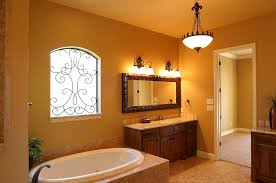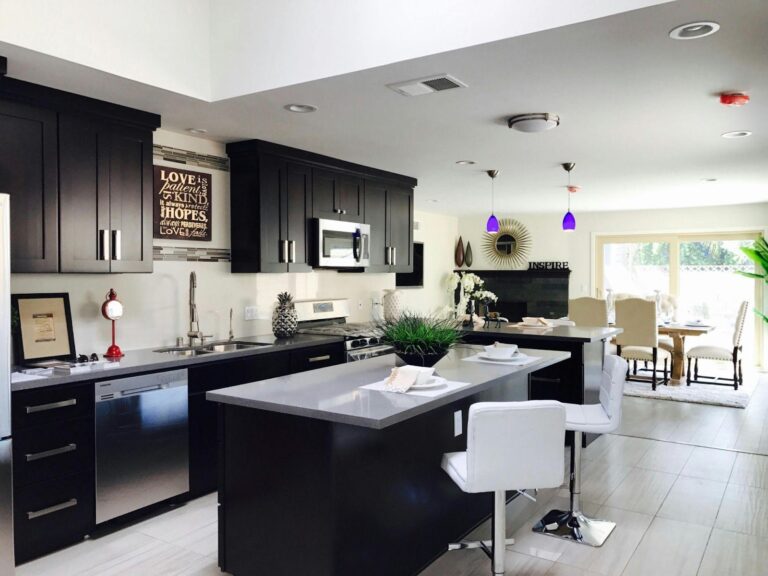
Creating an accessible home is all about making life easier for everyone, especially for those with mobility challenges, disabilities, or aging family members. Modifying your home for accessibility improves safety and also gives people more independence to reside with confidence. Whether it’s widening doorways or installing more accessible features in key areas like the bathroom or kitchen, these modifications are practical and highly beneficial.
Each room presents unique needs when it comes to accessibility. Let’s explore some key changes that can make a big difference.
- Bedroom Adjustments for Comfort and Mobility
In the bedroom, comfort and accessibility should go hand in hand. Wide doorways are a must for individuals who use wheelchairs or walkers. This allows for easy entry and exit without the worry of bumping into walls or getting stuck in tight spaces. Additionally, adjustable beds or beds that sit higher off the ground can make it easier to get in and out without assistance. These changes, though simple, make a big difference in day-to-day living and offer everyone a restful and accessible space.
Smart technology can also play a huge role in making bedrooms more accessible. Voice-activated lighting, for example, allows individuals to control their environment without needing to get out of bed. Installing these kinds of systems can provide convenience and independence, giving people more control over their personal space. And for those who need additional help, placing frequently used items within easy reach—such as on bedside tables or in accessible drawers—makes life simpler and less stressful.
- Bathroom Modifications for Safety and Ease
The bathroom is often the first place people think about when considering home accessibility, and for a good reason—it’s a space where slips and falls are more likely to happen. One of the most significant improvements in bathroom accessibility is the installation of walk in tubs. These tubs are designed to allow people to step in without having to climb over a high tub wall, reducing the risk of tripping or falling. They often come with built-in seating, handrails, and slip-resistant surfaces, making bathing safer and more comfortable. For anyone with mobility concerns, this feature can be life-changing as it offers a level of independence that standard tubs don’t provide.
But installing one of these tubs isn’t something you should tackle on your own. Professional remodelers specialize in making homes more accessible and can help you customize the tub to fit the space and your specific needs. They can also add additional safety features like grab bars or non-slip flooring, which further reduces the risk of accidents. Having professionals handle the installation guarantees that everything is done correctly.
- Kitchen Adjustments for Easy Access
The kitchen is another area where thoughtful adjustments can greatly improve accessibility. One key consideration is lowering countertops and cabinets so that they are easily reachable for individuals who use wheelchairs or have limited mobility. Inaccessible kitchens can make even simple tasks, like preparing a meal, frustrating and time-consuming. Installing pull-out shelves and drawers instead of traditional cabinetry can also make it easier to access items without having to bend or stretch. This small change can make everyday kitchen activities far more convenient.
Appliances also play a huge role in kitchen accessibility. Ovens with side-opening doors and stoves with front-facing controls reduce the need for awkward stretching, which is particularly helpful for those with mobility challenges. Touch-activated faucets, which allow water to flow with just a simple tap, are another great addition.
- Living Room Modifications for Accessibility and Comfort
The living room is often the heart of the home, where family and friends gather. Making this space accessible is important for creating a welcoming and comfortable environment for everyone. One of the easiest ways to improve accessibility is by decluttering and arranging furniture to allow for easy movement. Wide pathways are essential for individuals using mobility aids like wheelchairs or walkers. Replacing thick carpets with low-pile flooring or hardwood can prevent tripping hazards and make it easier to move around. Additionally, placing furniture at appropriate heights, such as lower couches or adjustable chairs, can provide comfort while ensuring accessibility.
Technology can also be integrated into the living room to enhance accessibility. Automated blinds, voice-activated smart devices, and easy-to-reach electrical outlets make the space more user-friendly. Features like smart thermostats, which can be controlled through voice commands or mobile apps, allow individuals with limited mobility to adjust their environment without needing to move.
- Entryway and Hallway Enhancements
The entryway is the first area that needs to be accessible, as it sets the tone for the rest of the home. For individuals with mobility challenges, steps at the entrance can be a significant obstacle. Installing a ramp is an easy solution that allows wheelchair users or those with walkers to enter and exit the home safely. Ramps should be accompanied by sturdy handrails for extra support. In addition, widening doorways and installing lever-style handles rather than traditional round doorknobs can make entering and exiting the home more effortless for everyone.
Hallways should also be considered for accessibility improvements. Keeping hallways well-lit with bright, easily controlled lighting is crucial for those with vision impairments. Adding handrails along the walls provides extra stability while minimizing obstacles like shoes, coats, or décor can prevent tripping hazards. Even these small adjustments can enhance the overall accessibility and safety of your home’s layout.
- Home Office or Workspace Considerations
With more people working remotely, creating an accessible home office is becoming increasingly important. For those with mobility concerns, adjustable-height desks allow users to work while sitting or standing, providing flexibility. Such desks are especially helpful for individuals who may need to change positions throughout the day. Ergonomic chairs designed for comfort and support are also vital for maintaining physical well-being during long work hours. Creating an environment that promotes good posture and reduces strain can make working from home more comfortable for everyone.
In addition to furniture, technology can improve accessibility in home offices. Voice-activated devices, such as smart assistants, can perform tasks like setting reminders or controlling other smart gadgets in the office. For individuals with limited dexterity, voice-to-text software can make writing emails or documents easier. This setup helps ensure that the workspace is functional and accessible, supporting productivity and comfort.
Creating an accessible home doesn’t have to be overwhelming. With thoughtful modifications in key areas like the bathroom, kitchen, living room, entryways, and home office, it’s possible to design a space that’s safe, comfortable, and easy to navigate. Each room has unique requirements, but making these changes will ultimately improve everyone’s quality of life.
Write and Win: Participate in Creative writing Contest & International Essay Contest and win fabulous prizes.


